
Quick Summary: Traditional project cycle management provides a necessary roadmap, but its rear-view mirror focus leaves leaders reacting to crises they should have anticipated. This article details how integrating predictive analytics into each lifecycle phase transforms a static framework into a dynamic early-warning system. The result: the foresight to de-risk initiatives, align stakeholders, and consistently deliver strategic value, turning project management from a delivery discipline into one of competitive advantage.
Project Cycle Management: Why Do Even the Best-Funded Projects Fail Without It?
A senior program manager once shared this painful truth: “We didn’t lose the project because we lacked talent. We lost it because no one saw the red flags until it was too late.” The initiative had everything: funding, executive sponsorship, and a high-impact vision; yet it ended in delays, rework, and millions wasted.
This scenario is more common than most leaders would like to admit. Projects meant to be drivers of transformation, but they often become cautionary tales of missed opportunities. The pressure is immense, stakeholders expect speed, sponsors demand return on investment (ROI), and teams crave clarity. But without a structured approach, even the best-resourced projects stumble. That’s where project cycle management (PCM) steps in.
PCM is a disciplined framework that takes projects from idea to impact through five essential phases: initiation, planning, execution, monitoring & control, and closure. It provides structure when uncertainty looms and ensures that no stage of the journey is left to chance.
Yet in today’s volatile environment, structure alone isn’t enough. Deadlines slip quietly, risks multiply invisibly, and stakeholder sentiment shifts before anyone notices. But what if you could shift from merely adapting to change to actively anticipating it? Pairing project cycle management with artificial intelligence-powered predictive analytics changes the game. It transforms PCM from a static framework into a dynamic early-warning system, surfacing risks and stakeholder misalignments before they escalate. Furthermore, the predictive project management solution offers predictive, stakeholder-driven insights that help leaders manage projects and steer them toward success with confidence.
This guide will walk you through the five essential phases of mastering your project's lifecycle and reveal how leveraging predictive intelligence is the ultimate strategic advantage for leaders who expect excellence.
What is Project Cycle Management?
Project cycle management is the comprehensive process of guiding a project from its initial idea to its final closure, using a structured, phased approach. Think of it as a detailed roadmap designed to provide clarity, control, and alignment throughout a project's lifespan.
Unlike linear methodologies, PCM is iterative and adaptive. It breaks down the project journey into manageable phases—typically initiation, planning, execution, monitoring and control, and closure. Each phase serves a unique purpose, ensuring that every decision and action contributes directly to the project's strategic goals and delivers tangible value.
At its core, PCM ensures:
- Strategic alignment: Every project supports organizational goals.
- Structured delivery: Phases and processes are standardized.
- Informed decision-making: Leaders have access to real-time and predictive insights.
This makes project cycle management a discipline that balances governance with adaptability. Mastering this cycle is what separates good project managers from great ones. It provides the structure to confidently navigate uncertainty and the tools to turn vision into reality.
If project cycle management provides the structure to turn vision into reality, then the natural next question is—how does this structure actually unfold in practice? The answer lies in five distinct yet interconnected phases, each carrying its own weight in shaping whether a project thrives or falters.
Stop managing projects in hindsight—lead them with foresight. Discover how TrueProject empowers you with predictive insights to ensure every project delivers measurable success. Book your demo.
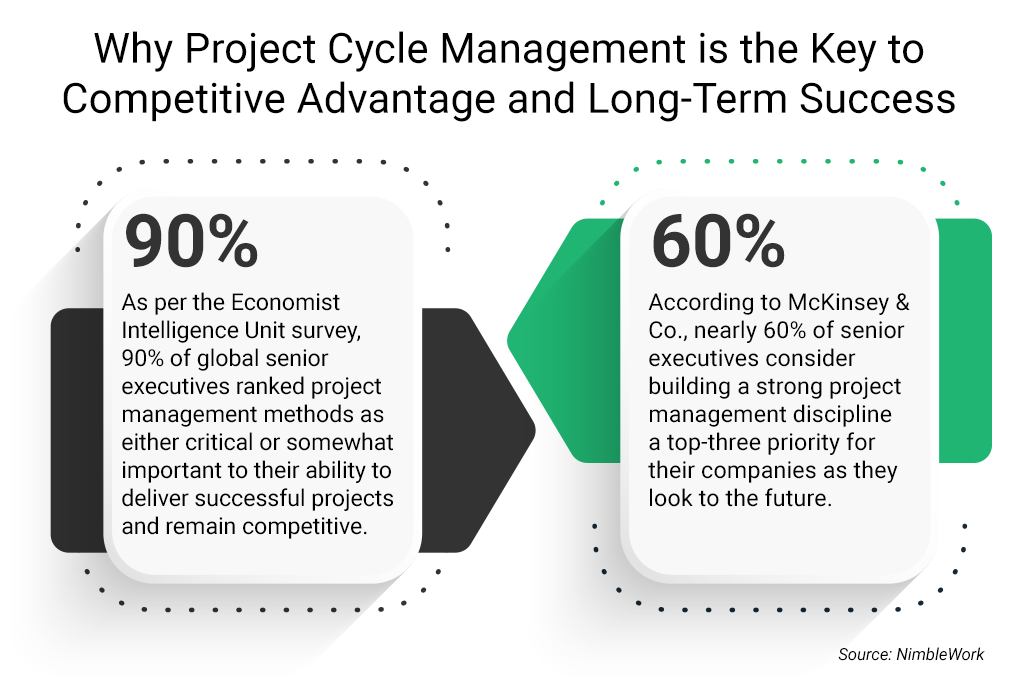
What Are The 5 Phases of Project Cycle Management
Project cycle management is a well-rounded method that allows teams to hit milestones, adapt to hurdles, and ensure timely delivery. How exactly does it work? Let’s dive into the five phases of project cycle management that shape every successful project journey.
1. Project Initiation
This is the foundation-laying stage. The goal is to define the project at a high level and determine its viability. Key activities include:
- Developing a project charter to authorize the project formally.
- Identifying key stakeholders and their expectations.
- Defining the project's primary goals and objectives.
- Conducting a preliminary feasibility analysis and resource assessment.
Projects often launch based on inaccurate assumptions, leading to misalignment and scope issues.
2. Project Planning and Design
If initiation is the "why," planning is the "how, when, and who." This phase creates the blueprint for the entire project. A robust plan includes:
- Scope Statement: A detailed description of the project's deliverables to prevent scope creep.
- Work Breakdown Structure (WBS): Decomposing significant deliverables into manageable tasks.
- Timeline & Milestones: Creating a realistic schedule with key checkpoints.
- Resource & Budget Plan: Assigning team members and forecasting costs.
- Risk Management Plan: Identify potential risks and develop mitigation strategies.
Even the best-laid plans can become outdated quickly. Static documents cannot account for unforeseen market shifts, resource changes, or emerging risks.
3. Project Execution
This is the action phase, where plans are put into motion. The team completes tasks, managers allocate resources, and deliverables are produced. Effective execution requires:
- Strong organizational leadership and transparent task allocation.
- Efficient resource management.
- Quality assurance processes to ensure outputs meet standards.
This is where most projects encounter friction. Without real-time visibility, managers are often unaware of delays or issues until it's too late to correct course without significant cost or time impacts.
4. Monitoring and Controlling
Running parallel to execution, this phase ensures the project stays on track. It involves continuously measuring progress against the plan and making adjustments as needed. Key functions include:
- Tracking Performance: Using KPIs and status reports to monitor schedule, budget, and scope.
- Managing Change: Evaluating change requests and assessing their impact.
- Quality Control: Verifying that deliverables meet the defined requirements.
- Risk Monitoring: Watching for trigger events and executing the risk response plan.
Traditional monitoring is often retrospective. You're looking at what already happened, not what will happen. This reactive stance turns managers into firefighters instead of strategic leaders.
5. Closure
The final phase formally concludes the project. Closure is not just about delivering the final product; it's about capturing value for the future. Activities include:
- Handing over the final deliverable to the client or operations team.
- Releasing project resources and closing out contracts.
- Conducting a post-mortem analysis to document lessons learned.
- Archiving project documentation and celebrating success.
Many organizations skip or rush closure, losing invaluable insights that could prevent the same mistakes on future projects.
Each phase brings unique value, aligning efforts toward a well-executed project. Together, they make project cycle management a comprehensive guide to getting things done right the first time. So, how do these phases drive real value and impact for teams and projects? Understanding its importance can reveal the key to achieving smoother workflows, better outcomes, and lasting project success.
Mastering the five phases gives you the mechanics of delivery, but what makes them truly matter is the value they create. Beyond tasks and timelines, why does project cycle management stand as the difference between projects that finish and those that deliver lasting impact?
Why Is Project Lifecycle Management Important?
Many professionals know the weight of handling a large IT project; the pressure can feel overwhelming, especially when similar efforts have stumbled in the past. Juggling strict timelines, diverse teams, external partners, and financial risks often creates a sense that one wrong move could derail everything.
That’s where project cycle management ensures every project stays aligned with the organization’s policies, long-term strategy, and the needs of its stakeholders. By grounding projects in these essentials, PCM keeps efforts relevant, purposeful, and sustainable. This structured approach provides order, reduces uncertainty, and sets a clear path forward. By guiding every project stage, PCM equips professionals with the confidence to handle complexity, anticipate challenges, and deliver lasting results.
At its heart, PCM is a collaborative process. It involves stakeholders in every phase, uses a proven framework like the logical framework approach, and embeds quality checks and documentation. This structure not only supports effective decision-making but also strengthens accountability and transparency.
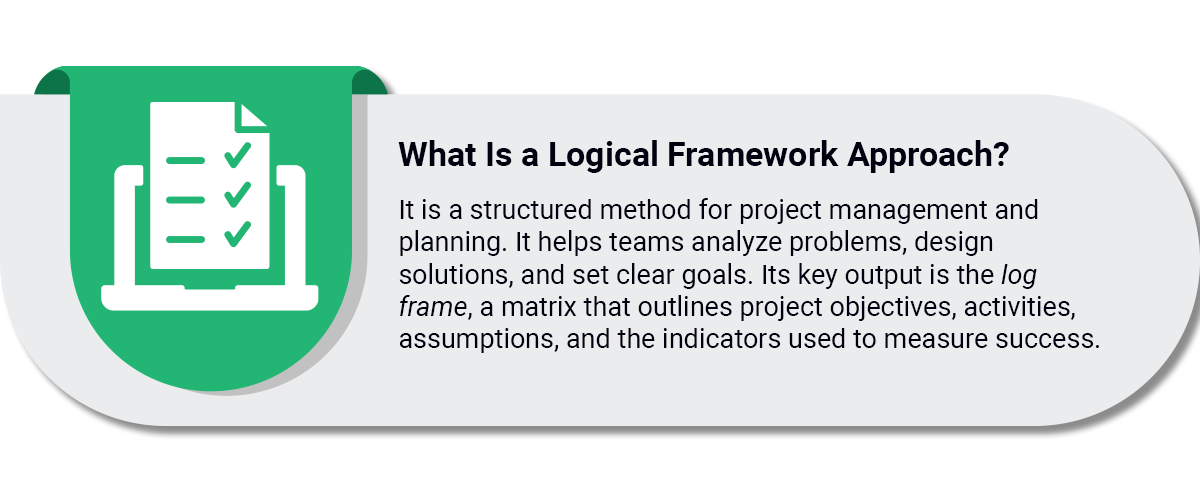
Key Benefits of PCM Framework
Keeps Projects Strategically Aligned
With PCM’s disciplined planning and monitoring, projects remain firmly tied to organizational objectives. Clear checkpoints make it easier to spot deviations early and apply corrective measures, keeping initiatives on track and in sync with larger business goals.
Strengthens Stakeholder Involvement
Stakeholders play an active role in every stage of the project cycle management. Their input helps anticipate changes, minimize risks, and consistently reflect priorities in project outcomes. This continuous dialogue fosters trust and builds more substantial commitment to the project’s success.
Builds Agility Through Iteration
One of PCM’s greatest strengths is its adaptability. Because monitoring and feedback are ongoing, teams can respond to risks and changes in real time rather than waiting until the end. This iterative approach reduces performance issues, supports effective change management, and ensures lessons learned feed directly into future projects.
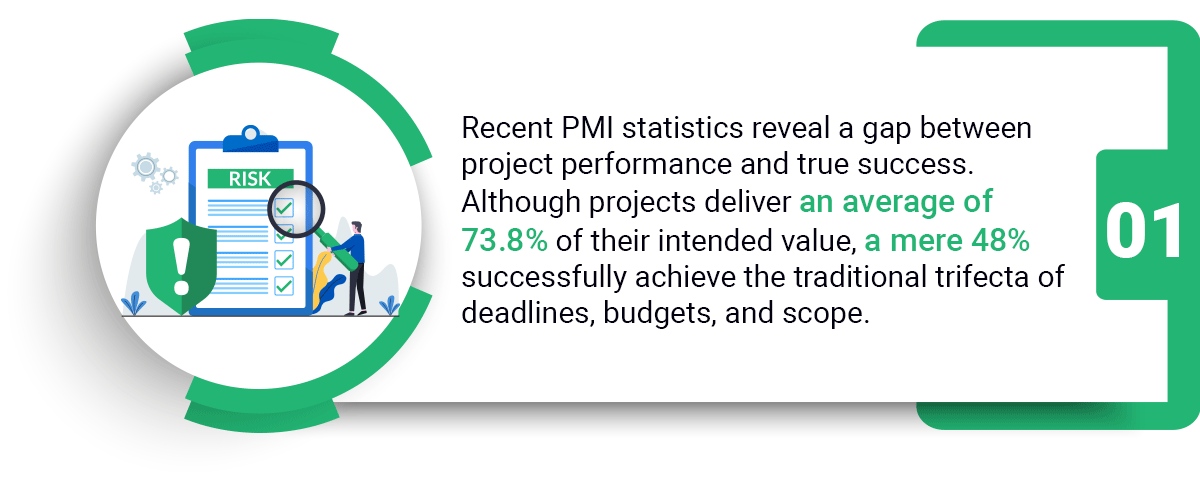
The Takeaway: Project cycle management is necessary but not sufficient. The differentiator is foresight: spotting schedule, scope, and stakeholder hazards early enough to adjust. That’s where predictive project management adds tangible advantage.
Projects rarely follow a straight line, and the real test lies in how leaders respond when scope, resources, or communication begin to crack the foundation.
What Are the Challenges and Modern Solutions of Project Life Cycle Management
As a project manager, you know project cycle management isn’t a straight path; it’s more like a winding road with unexpected detours and roadblocks. But what if those challenges could be anticipated, mitigated, and effectively managed? Here’s a look at the most common hurdles in project cycle management, each demanding a specific approach to stay on track.
Scope Creep
Project requirements that grow beyond the initial plan can strain resources and delay timelines. Establishing precise change controls and regularly reviewing project scope can help keep things on track. Traditional project management solutions offer strict change control processes.
The Solution: AI-powered predictive project management can analyze project data to identify patterns that historically lead to scope creep. The solution alerts project leaders to examine these patterns in real-time, allowing for proactive intervention before a single unauthorized change is approved.
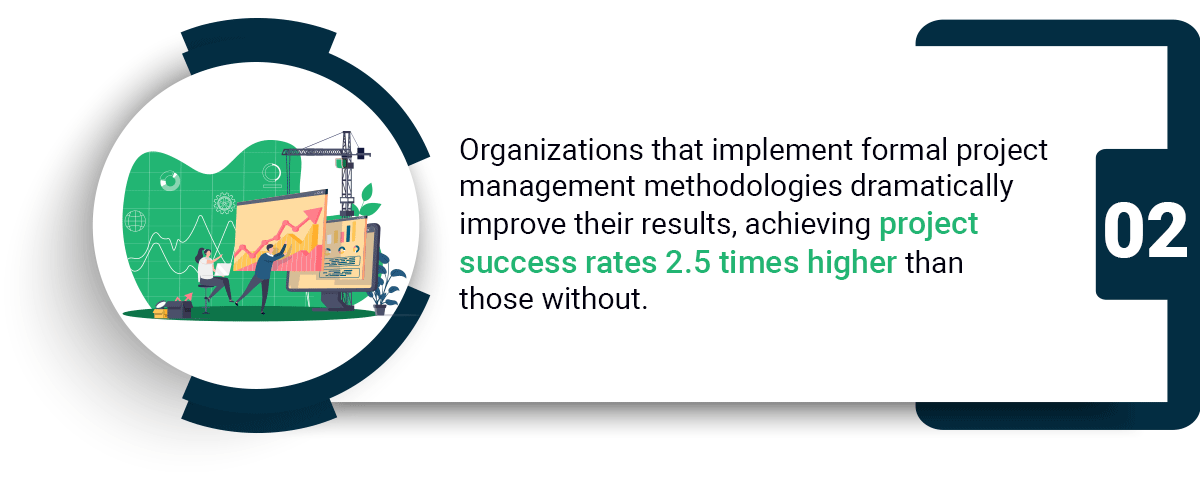
Resource Constraints:
Limited resources can stall progress and affect outcomes, whether through reallocating resources or seeking additional support. Planning and building backup strategies can help.
The Solution: Predictive intelligence can help you overcome resource constraints by forecasting resource bottlenecks and analyzing current project demands against resource availability and planned timelines. This allows managers to reallocate resources preemptively or justify the need for additional support with data.
Communication Gaps:
Poor communication slows productivity and creates confusion. Establishing an open, collaborative environment and holding structured and casual meetings can keep everyone on the same page.
The Solution: A centralized predictive analytics-powered project management solution provides a single source of truth. It offers real-time visibility into project health, milestones, and risks for all stakeholders, fostering collaboration and enabling faster, data-driven decisions without waiting for the next status meeting.
Applying the right practices and framework is what truly separates successful projects from stalled ones. So, what proven approaches can help teams stay resilient, aligned, and consistently deliver results?

Best Practices for Avoiding Scope Creep in PCM
Project cycle management is about aligning each phase with a strategy that sets your project up for success, anticipating what lies ahead, and making real-time adjustments. But what does “best practice” look like in project cycle management today? Here are a few effective techniques for mastering project management:
- Set Milestones: Breaking projects into milestones with deadlines makes them feel more achievable and keeps everyone aware of progress.
- Communicate Consistently: Regular check-ins help identify bottlenecks, share ideas, and keep everyone aligned.
- Engage Stakeholders: Bringing stakeholders into the process with feedback and regular updates ensures the project meets expectations.
- Monitor Task Progress: Keeping a close watch on tasks—and making this easy for your team—helps avoid missed deadlines and ensures nothing slips through the cracks.
With real-time insights, proactive risk management, and smarter decision-making, projects can move from reactive to resilient. In today’s unpredictable environment, steadiness isn’t always enough. What if you could go beyond managing the present to anticipating the future, spotting risks, shifts, and opportunities before they surface?
Turn uncertainty into clarity with TrueProject. See how predictive intelligence gives you the foresight to keep projects aligned, de-risked, and consistently successful. Learn more here.
How Does Predictive Intelligence Improve Project Lifecycle Management?
Mastering the project cycle management phases is the first step. The final step is infusing each phase with the power of anticipation. This is where your journey evolves from simply managing projects to leading them with unwavering confidence. The modern predictive project management solution doesn't just track what’s happening; it predicts what will happen.
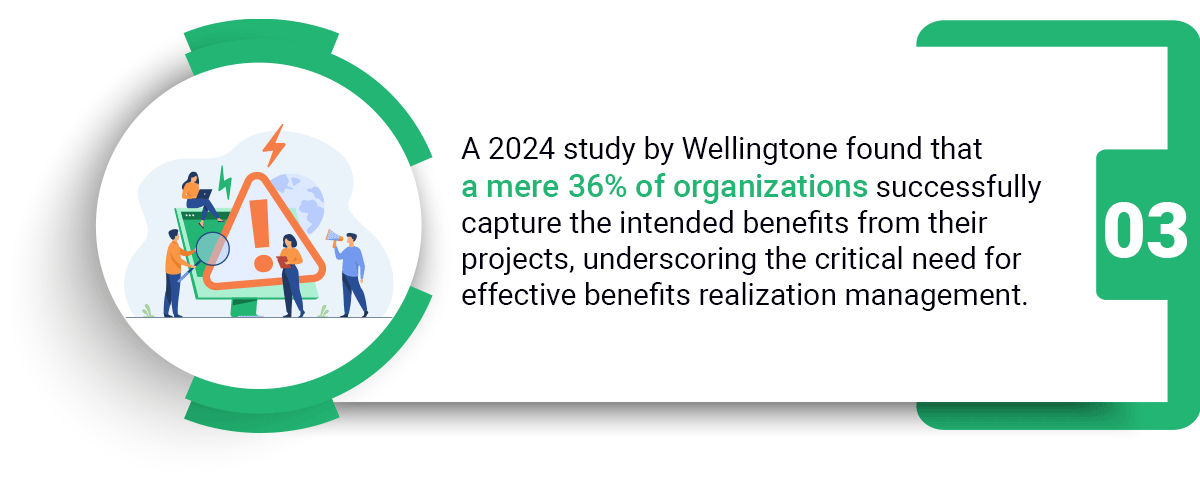
- Predictive Analytics: The AI solution analyzes your project data to identify potential issues, like cost overruns, schedule delays, or scope creep, weeks or months before they become critical.
- Real-Time Health Scoring: Predictive analytics-powered project management solutions allow you to focus your attention where it's needed the most by offering an instant, objective view of your project's health.
- Data-Driven Decision Making: Move from gut feelings to confident decisions backed by empirical data and trend analysis.
- Enhanced Stakeholder Engagement: Get precise, unbiased data to manage stakeholder expectations effectively. It automatically assesses engagement levels and project sentiment. This allows you to identify disengaged or concerned stakeholders early and take action to re-align them with the project's goals, ensuring continuous buy-in and support.
With a structured approach powered by predictive intelligence, you're not just completing projects. You build a foundation for sustained growth, client trust, and strategic excellence.
Project Cycle Management: From Predictable Process to Predictive Advantage
The true measure of a project's success is the lasting value it delivers and the confidence it instills. Project cycle management provides the essential structure for this journey, the map that guides us from a bold idea to a meaningful impact. However, structure alone won't cut it in a world where project risks shift faster than traditional methods can respond. You need a modern solution that points toward future obstacles and opportunities long before they appear on the horizon.
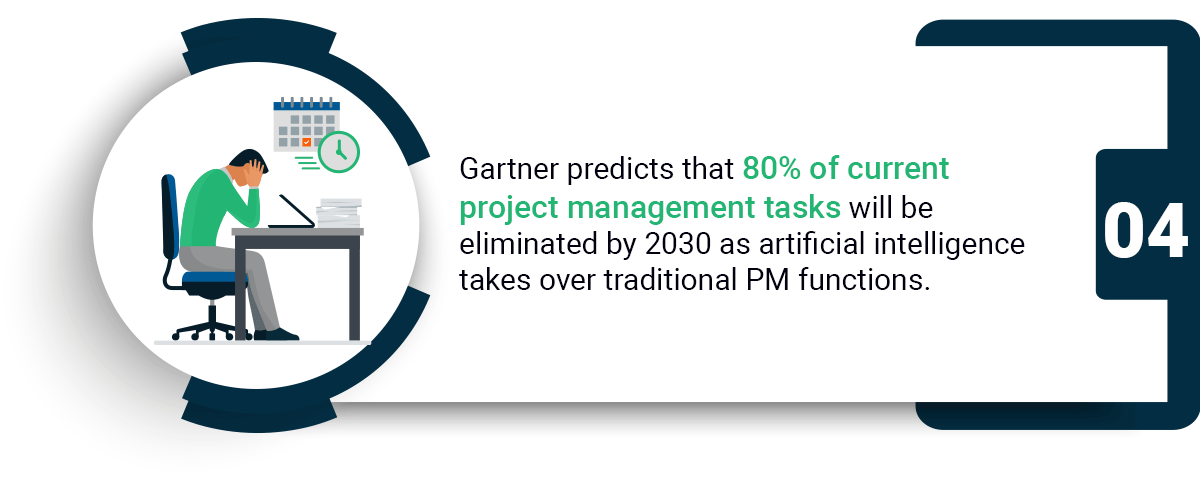
That shift—from reactive management to proactive leadership—is the ultimate strategic advantage. It’s the difference between explaining why a project veered off course and steering it confidently to its destination. By integrating predictive intelligence into each phase of the project cycle, you gain more than just data; you gain foresight. This empowers you to lead with clarity, align your teams around what truly matters, and build a culture where every project strengthens your organization's foundation for the next. The real question for leaders is no longer: Can we deliver? But instead, can we deliver consistently, confidently, and strategically?
This is where TrueProject, a KPI-based predictive project management SaaS solution that improves project health and performance, reshapes the project cycle management experience. TrueProject integrates seamlessly with your existing framework, infusing each phase with predictive analytics and stakeholder-driven insights. It transforms your management process into a dynamic early-warning system, providing the clarity and confidence to guide every project to its successful and strategic conclusion.
See how your projects measure up before risks derail them. Get your personalized TrueProject Snapshot today and experience predictive insights that drive confidence, alignment, and lasting success. Start here.
FAQs of Project Cycle Management
What’s the difference between project cycle management and the project life cycle?
They’re often used interchangeably. “Life cycle” describes the phases themselves; “cycle management” emphasizes the governance and practices across those phases. Authoritative sources outline the same five phases.
How do I prevent scope creep without slowing delivery?
Set a baseline, enforce change control, and require impact-first analysis (benefit, cost, risk) with time-boxed decisions. Predictive signals (e.g., rising change frequency) help you intervene earlier.
What KPIs should execs watch during monitoring & control?
You should use schedule and cost indices (SPI/CPI), throughput/cycle time, scope volatility, defect trend, and stakeholder sentiment from your engagement matrix.
Do the five phases apply to agile projects?
Yes agile iterates inside the same initiate → close envelope; the cadence and artifacts differ, but PCM’s governance spine still holds.
Is there data that disciplined PCM reduces waste?
PMI reports notable reductions in wasted investment when organizations mature practices and skills; aligning governance to PCM is part of that effect.






